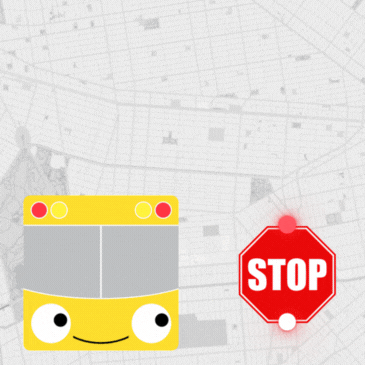Chicago, IL --A few seconds before the vehicle turns the corner of Rush and Oak streets in the heart of the ritzy Gold Coast, the unsuspecting pedestrian hears loud music. But this isn't the thumping bass one usually hears.
A Tank in the Streets, Fighting for the Jewish Soul
Chicago, IL –A few seconds before the vehicle turns the corner of Rush and Oak streets in the heart of the ritzy Gold Coast, the unsuspecting pedestrian hears loud music. But this isn’t the thumping bass one usually hears.
It’s Hasidic music. From the Mitzvah Tank.
Two young men are let out on the corner. The boys are dressed in black or dark gray – black felt fedoras, black suits, white shirts—traditional Hasidic garb.
Every Friday, the 70 students of the all-male Jewish high school, Lubavitch Misivta of Chicago, located in West Rogers Park, venture to different parts of the city, including Highland Park, Skokie, the Loop and the Gold Coast.
Their mission?
It may seem like proselytizing, but it’s not. They are only bringing their religion to fellow Jews. Along with several teachers’ assistants, Rafie Andrusier, 20, or Yossi Bendet, 20, the all-male students go out in pairs to help Jews connect to their religion through a campaign they call “Mitzvah on the spot for people on the go,” Andrusier said.
And although they do not try to convert non-Jews, they are open to speaking to anyone.
What’s a Mitzvah?
The Torah has 613 Divine commandments, or Mitzvah, for Jews to follow. The word also means connection: a deed that connects the human being who performs it with God — or, as Andrusier said, “Mitzvah means connection to the infinite –God himself.”
When?
Not just weekly, but during holidays and pre-holiday periods. The students visit hospitals and nursing homes. During Hanukah nights, the student’s hand out kits that include menorahs, candles and dreidels. In the weeks preceding Passover, the students distribute Passover Matzos.
Why?
Forty years ago, Rabbi Menachem Mendel Schneerson, known to his followers as the Rebbe, started a movement to bring religious teaching to Jews outside of the confines of the usual places of worship. “He inspired and brought life to the idea of bringing the Torah out to the people,” Andrusier said.
Many people don’t really know the religion, according to Andrusier. “They’re social Jews,” he said. “Judaism is not a culture, it’s a lifestyle.”
The Rebbe taught that doing favors for strangers was a way of helping Jews practice their Mitzvot. It was he who inspired the Lubavitcher movement.
Parents enroll their children in the Lubavitcher schools because they want their children to partake in helping the non-practicing Jews stay connected to the teachings of the Torah.
“There are many Jews that grew up without a Jewish education,” said Leah Miller, 47, whose 15-year-old son attends the Lubavitch high school, “We consider it a privilege that our children are able to participate in such a program, that they’re entrusted with such important work.”
According to Miller’s son Shalom, who was recruiting Jews in the Gold Coast on Friday to come aboard the Mitzvah Tank, he enjoys this work. “I think it’s incredible,” he said.
Miller’s five other children also attended similar schools. Boys and girls have separate high schools. And according to Miller, the work is important not only because many Jewish traditions were diminished or lost after the Holocaust, but also because of “a lack of available Jewish education in America.”
How?
The Rebbe developed the practice of taking the Tefellin on the road. The Tefellin is a small leather box with long leather straps that are placed around a male’s arm and head.
Inside the box are Scripture-inscribed parchment scrolls. By practicing this mitzvah, the wearer is said to connect to God. “We try to give them a real sense of why follow the commandments,” Andrusier said.
But a mitzvah of Ahavat Yisroel, or love of your fellow Jew, doesn’t necessarily limit itself to doing a physical favor, but even a spiritual favor. And that, Andrusier said, “is what we do every week — doing a spiritual favor for another Jew, by giving them an opportunity to put on the Teffilin or to give ladies Shabbat candles and the like based on our love for every Jew.”
Ben Begelman, 21, from Chicago was brought back to the tank by one of the boys. He wore the Tefillin and recited a prayer as instructed by the Lubavitchers. “As long as we’re all connecting to make a better world,” he said.
So, what’s a Mitzvah Tank?
The mobile home is named after a Mitzvah, or commandment. The first Mitzvah Tanks appeared in Los Angeles and New York in the early 1970s.
It’s a tank because it goes out into the world and conquers positively, according to Andrusier. It’s a kind of battle for the soul of the American Jew.
Since when?
Then end of May marks the 30th anniversary of the Lubavitch Chabad of Illinois. The Mitzvah Tank has been roaming Chicago’s streets for about 10 years
What if you’re not Jewish?
If you’re not Jewish the Lubavitchers will still talk to you and probably give you a pamphlet, Andrusier said.
So, if you see the Mitzvah Tank, you don’t have to go onboard and put on the Tefillin.
The main thing they want is for all to do a good deed. “Just a smile is enough,” Andrusier said.













fuzzy cuzzies
Dovy G- lookin good!
i lost My nailclipper.
Go Trulllliii!!!!
Former Chicago boy
great job Chicago!
what about the lag b’omer parade?
Roy Graham Bloomington
I would like to travel to Chicago and volunteer for you Mitzvah tank.
I put Tefillin every day, sans Sabbath, and would also like to contribute. Please call or email me, I am in Indiana and can travel for a weekend, but will need a place to stay, thanks in advance,